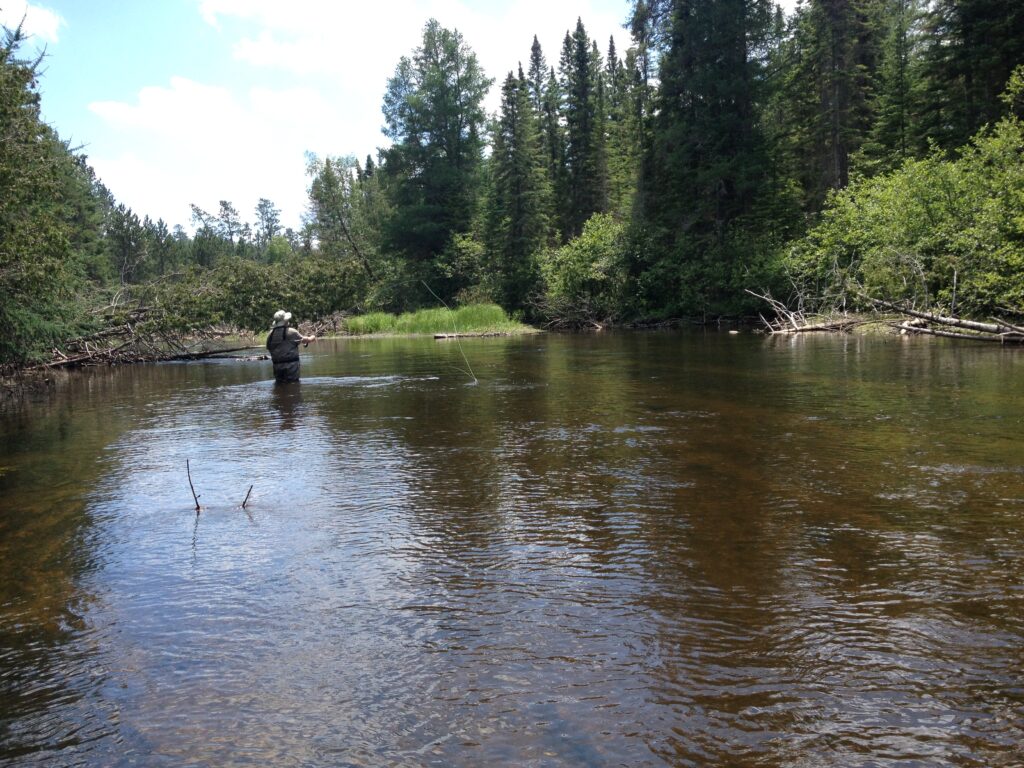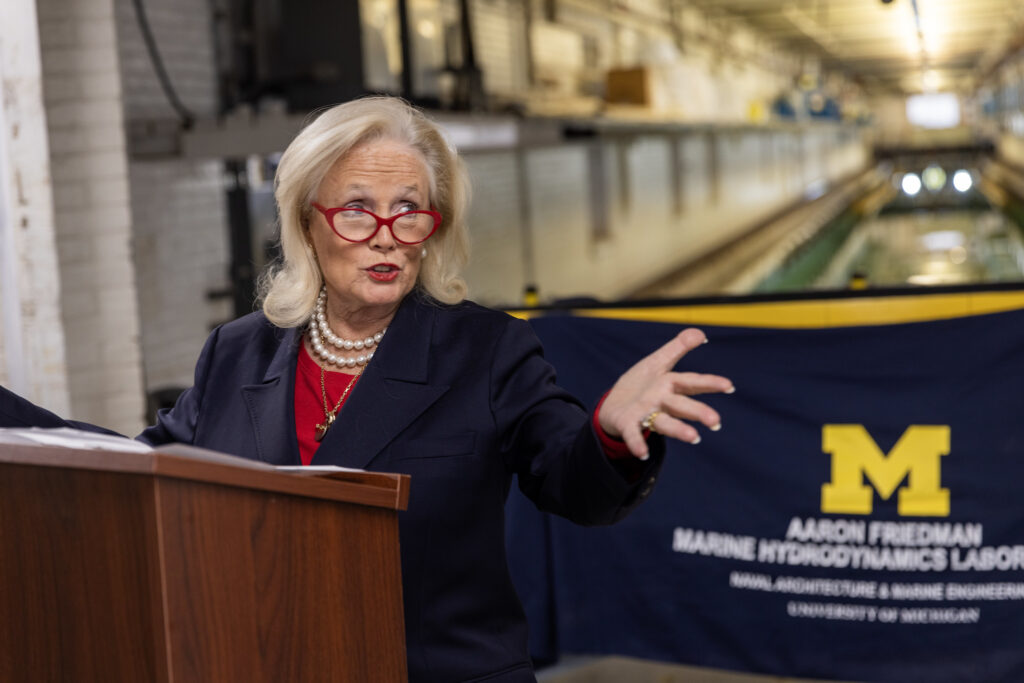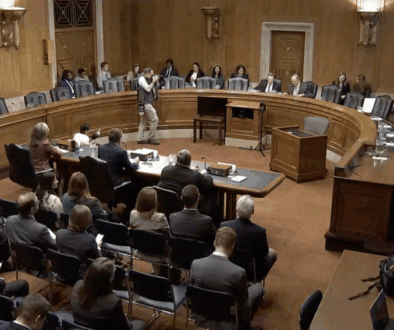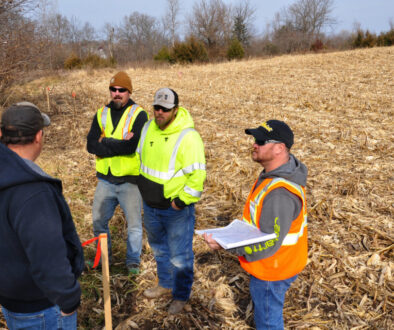Listen to the audio version of this article (generated by AI).
Tony Spaniola’s “up north” home in Michigan is in a once pristine northeast part of the state on the shores of Lake Huron.
But the community of Oscoda has been told by health officials to not eat local fish or deer, drink the water from certain community wells or touch any foam along the Lake Huron shoreline. The community is heavily contaminated with harmful PFAS chemicals from a former fire training area at Wurtsmith Air Force Base run by the US Department of Defense.
“These problems devastated our way of life,” said Spaniola, co-chair of the Great Lakes PFAS Action Network, in a Wednesday briefing. “But Oscoda is not unique.”
Spaniola was one of four speakers in the briefing that outlined the Great Lakes region’s vulnerability to PFAS contamination and how federal policy needs to address this pressing health and environmental risk. The virtual briefing, led by the nonprofit Northeast-Midwest Institute, was aimed at giving lawmakers and their staff a deeper understanding of the impacts of — and solutions for — PFAS in the Great Lakes region.
“These problems devastated our way of life.” – Tony Spaniola, Great Lakes PFAS Action Network
Per- and polyfluoroalkyl substances, or PFAS, are a group of more than 9,000 chemicals that include several types linked to cancers, damage to organs and the immune system and other health problems. The chemicals are used in manufacturing and consumer products including non-stick pans, food packaging, raincoats and cosmetics, and were widely used in fire fighting foams and have contaminated hundreds of military bases around the country.
The chemicals are a nationwide problem — contaminating roughly 45% of US tap water — but the issue is particularly troublesome in the Great Lakes, which hold more than 20% of the world’s surface freshwater, support a $7 billion fishing industry, and provide drinking water to more than 30 million people in Canada and the US.
“PFAS have become ubiquitous across the Great Lakes and the Midwest,” said Marta Venier, an environmental chemist at Indiana University, during the briefing.
Studies continue to show PFAS in Great Lakes’ water and fish. Michigan, the epicenter of the Great Lakes, has an estimated 11,000 PFAS contaminated sites alone. While the US Environmental Protection Agency (EPA) recently signaled a weakening of PFAS drinking water regulations, a bipartisan congressional group with heavy Great Lakes’ states representation restarted a PFAS committee, and the US House of Representatives introduced a bipartisan initiative in January to expand funding for cleanup and monitoring of the lakes.
“We have bipartisan momentum and a moral obligation to act,” Spaniola said.
Great Lakes PFAS pollution
Scientists for years have sounded the alarm on PFAS in the Great Lakes, its fish and those living in the basin. A large study, led by Venier, published last year found that PFAS was literally raining down into the Great Lakes, and the highest concentrations were in Lake Ontario, followed by Lake Michigan, Lake Erie, Lake Huron and Lake Superior, which reflects the lakes’ proximity to industry.

The study also found PFOA and PFOS, which the EPA last year declared as hazardous substances, are decreasing in the lakes, however, a little-studied replacement compound, PFBA — linked to increased thyroid and liver weights and hormone and cell changes — remained high.
But PFOS was the dominant PFAS showing up in Great Lakes fish, according to a 2023 study of US rivers, streams and lakes. The researchers found some of the highest concentrations of PFAS in Great Lakes fish, writing that PFAS “contamination may be of particular concern for the Great Lakes ecosystem and the health of people who depend on fishing on the Great Lakes for sustenance and cultural practices.”
“PFAS have become ubiquitous across the Great Lakes and the Midwest.” -Marta Venier, Indiana University
And further testing from Lake Michigan confirmed this, finding PFAS in more than 200 sport and prey fish sampled from the lake in 2023.
Once PFAS get into the environment they bioaccumulate, Venier said, meaning they build up in wildlife at a faster rate than they are excreted from the body. “This also applies to humans,” she said.
Researchers see this trend in subsistence anglers: Burmese anglers in Western New York near Lake Ontario who rely heavily on locally caught fish for food had PFOS in their blood up to 6 times higher than the average American, according to a 2022 study.
Congressional momentum on PFAS
The briefing comes weeks after the EPA announced its revised plan to tackle PFAS in drinking water, sparking concern that the agency intends to weaken standards introduced by the Biden administration. The agency delayed the deadline for water systems to comply with PFOS and PFOA requirements from 2029 to 2031.

“We really do need members of Congress to voice opposition to the weakening of these standards,” said Erica Bloom, toxics campaign director at the Ecology Center in Michigan, at the briefing.
Amidst widespread deregulation at the EPA, there is an effort in the US House to work across the aisle in tackling PFAS. Earlier this month, US Rep. Brian Fitzpatrick, a Republican from Pennsylvania, relaunched the Congressional PFAS Task Force, a bipartisan group aimed at advancing PFAS legislation, educating other lawmakers and the public, and securing federal dollars for research and cleanup of the chemicals.
US Rep. Jen Kiggans, a Virginia Republican, and two Michigan Democrats, US Rep. Debbie Dingell US Rep. Kristen McDonald Rivet, are co-chairing the task force.
“We really do need members of Congress to voice opposition to the weakening of these standards.” – Erica Bloom, Ecology Center
In January the House introduced the Great Lakes Restoration Initiative (GLRI) of 2025, which calls for reauthorization of the initiative for five years and seeks to increase annual funding from $475 million to $500 million. The GLRI has enjoyed bipartisan support for years, bringing $4 billion to the region since its inception in 2010.
The 2025 reauthorization was sent to subcommittees in January.
“Congressional oversight and engagement is essential and this is a critical opportunity to ensure the federal government is not protecting federal institutions over people and local governments,” Spaniola said.
Featured image: Lake Superior (Credit: Brian Bienkowski/The New Lede)



